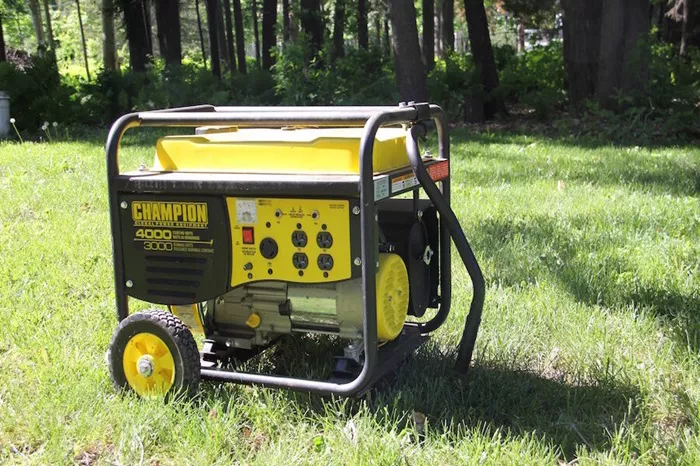Power outages can be frustrating and disruptive, especially during extreme weather conditions. A generator can be a lifesaver, providing backup power to keep your home running smoothly. However, connecting a generator to your home requires careful planning, the right tools, and adherence to safety protocols. In this guide, we’ll walk you through everything you need to know to connect a generator to your home safely and efficiently.
Why You Need a Generator for Your Home
Generators are essential for maintaining power during outages. They can keep your lights on, power your appliances, and even run critical medical equipment. Whether you live in an area prone to storms or simply want peace of mind, a generator is a valuable investment.
Types of Generators for Home Use
Before connecting a generator, it’s important to choose the right type for your needs.
Here are the most common options:
Portable Generators: These are affordable and easy to move but require manual setup and fueling.
Inverter Generators: Quieter and more fuel-efficient, ideal for powering sensitive electronics.
Standby Generators: Permanently installed and automatically activate during a power outage, providing seamless backup power.
Safety Precautions Before Connecting a Generator
Connecting a generator improperly can be dangerous.
Follow these safety tips:
Never backfeed your home: Plugging a generator directly into an outlet can send power back into the grid, risking electrocution or fire.
Use proper extension cords: Ensure cords are rated for outdoor use and can handle the generator’s load.
Keep the generator outdoors: Generators emit carbon monoxide, so always operate them in a well-ventilated area away from windows and doors.
Install a transfer switch: This device prevents backfeeding and ensures safe power transfer.
Tools and Equipment You’ll Need
To connect a generator to your home, gather the following tools and equipment:
- A generator with sufficient wattage for your needs
- A transfer switch or interlock kit
- Heavy-duty extension cords (if using a portable generator)
- Circuit tester
- Screwdrivers, pliers, and wire strippers
- Electrical tape and wire nuts
Step-by-Step Guide to Connecting a Generator to Your Home
Step 1: Determine Your Power Needs
Calculate the total wattage of the appliances and devices you want to power during an outage. This will help you choose the right generator size.
Step 2: Choose the Right Connection Method
There are two main ways to connect a generator to your home:
Using a Transfer Switch: This is the safest and most efficient method. It allows you to power specific circuits in your home without backfeeding the grid.
Using an Interlock Kit: A more affordable option, an interlock kit ensures your generator and main power supply cannot be active simultaneously.
Step 3: Install a Transfer Switch or Interlock Kit
Transfer Switch Installation: Hire a licensed electrician to install a transfer switch near your electrical panel. This device connects the generator to your home’s wiring and allows you to select which circuits to power.
Interlock Kit Installation: If you’re using an interlock kit, follow the manufacturer’s instructions to install it on your electrical panel. This kit ensures the generator and main power cannot be on at the same time.
Step 4: Connect the Generator to the Transfer Switch
- Place the generator outdoors in a well-ventilated area.
- Connect the generator to the transfer switch using a heavy-duty power cord.
- Start the generator and switch on the circuits you want to power.
Step 5: Test the System
Once everything is connected, test the system to ensure it works properly. Simulate a power outage by turning off the main power supply and switching to generator power.
Maintaining Your Generator
Regular maintenance ensures your generator operates efficiently and lasts longer.
Follow these tips:
- Check the oil and fuel levels before each use.
- Run the generator periodically to keep it in good working condition.
- Replace air filters and spark plugs as needed.
- Store the generator in a dry, protected area when not in use.
Common Mistakes to Avoid
Overloading the Generator: Avoid connecting too many appliances, as this can damage the generator and create a fire hazard.
Ignoring Local Codes: Always follow local electrical codes and obtain necessary permits before installing a generator.
Skipping Professional Help: While some tasks can be DIY, always consult a licensed electrician for complex installations.
Conclusion
Connecting a generator to your home is a practical solution for ensuring uninterrupted power during outages. By choosing the right generator, following safety precautions, and using the correct connection methods, you can keep your home running smoothly and safely. Whether you opt for a portable generator or a standby system, proper installation and maintenance are key to maximizing its benefits.
With this guide, you’re now equipped with the knowledge to connect a generator to your home confidently. Stay prepared, stay safe, and enjoy the peace of mind that comes with reliable backup power.
Related topic:
- 5 Top Affordable Home Generators
- 3 Best Generators for Off-Grid Homes
- 5 Top Quiet Home Generators for Peaceful Power

